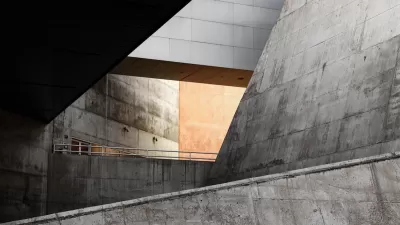Savvy real estate developers who can promote their projects as smart growth developments are attracting significant capital from public pension funds -- regardless of the actual merits of the project.
"In just a short decade, smart growth has become the chameleon of urban planning, changing its appearance depending on the need of the lobbyist, real estate developer or investor. Politicians use the phrase to quiet angry neighborhood leaders, even arguing that new development will fight congestion, not increase it. Developers insist they are pursuing smart growth simply by adding stores and restaurants to residential projects.
Smart growth is not just being used to secure public support for mega-projects. It is also helping investment-fund managers to secure hundreds of millions of dollars in public-pension money - funds invested on behalf of retired California teachers, police officers, firefighters and thousands of other retired government workers.
Smart growth is supposed to help make neighborhoods walkable, put jobs and homes close together, and deliver new housing for a wide range of income levels, not just the rich. But some of the public-pension funds - entities with the words "smart growth" in the name - are investing in projects that perpetuate rather than limit the sprawl."
""There's no smart-growth police going around saying, ‘This isn't smart growth,'" says former Los Angeles City Councilman Mike Woo, an urban planner on the city's planning commission. "So in the absence of a smart-growth police, it's the Wild West out there, with people using any name they want.""
FULL STORY: Peddling Smart Growth

What ‘The Brutalist’ Teaches Us About Modern Cities
How architecture and urban landscapes reflect the trauma and dysfunction of the post-war experience.

San Diego to Rescind Multi-Unit ADU Rule
The city wants to close a loophole that allowed developers to build apartment buildings on single-family lots as ADUs.

The VW Bus is Back — Now as an Electric Minivan
Volkswagen’s ID. Buzz reimagines its iconic Bus as a fully electric minivan, blending retro design with modern technology, a 231-mile range, and practical versatility to offer a stylish yet functional EV for the future.

Study: Walkability Can Help Reduce Dementia Risk
Walkable neighborhoods offer natural opportunities to stay active and engaged with friends and neighbors, increasing residents’ chances of remaining mentally and physically healthy longer.

Empower LA: The LA2050 Grants Challenge
The 2025 LA2050 Grants Challenge invites organizations to become outreach partners and help mobilize Angelenos to vote on how $1 million in grants will be allocated to address key local issues like homelessness, income inequality, and park access.

Take a Walk: Why Step Count Is the Most Valuable Fitness Metric
Step count remains the most valuable fitness metric for longevity and well-being, offering a simple yet powerful way to track daily movement, reduce health risks, and promote active lifestyles without reliance on complex data or technology.
Urban Design for Planners 1: Software Tools
This six-course series explores essential urban design concepts using open source software and equips planners with the tools they need to participate fully in the urban design process.
Planning for Universal Design
Learn the tools for implementing Universal Design in planning regulations.
City of Edmonds
City of Albany
Harvard GSD Executive Education
UCLA Lewis Center for Regional Policy Studies
Mpact (formerly Rail~Volution)
City of Piedmont, CA
Great Falls Development Authority, Inc.
HUDs Office of Policy Development and Research


























